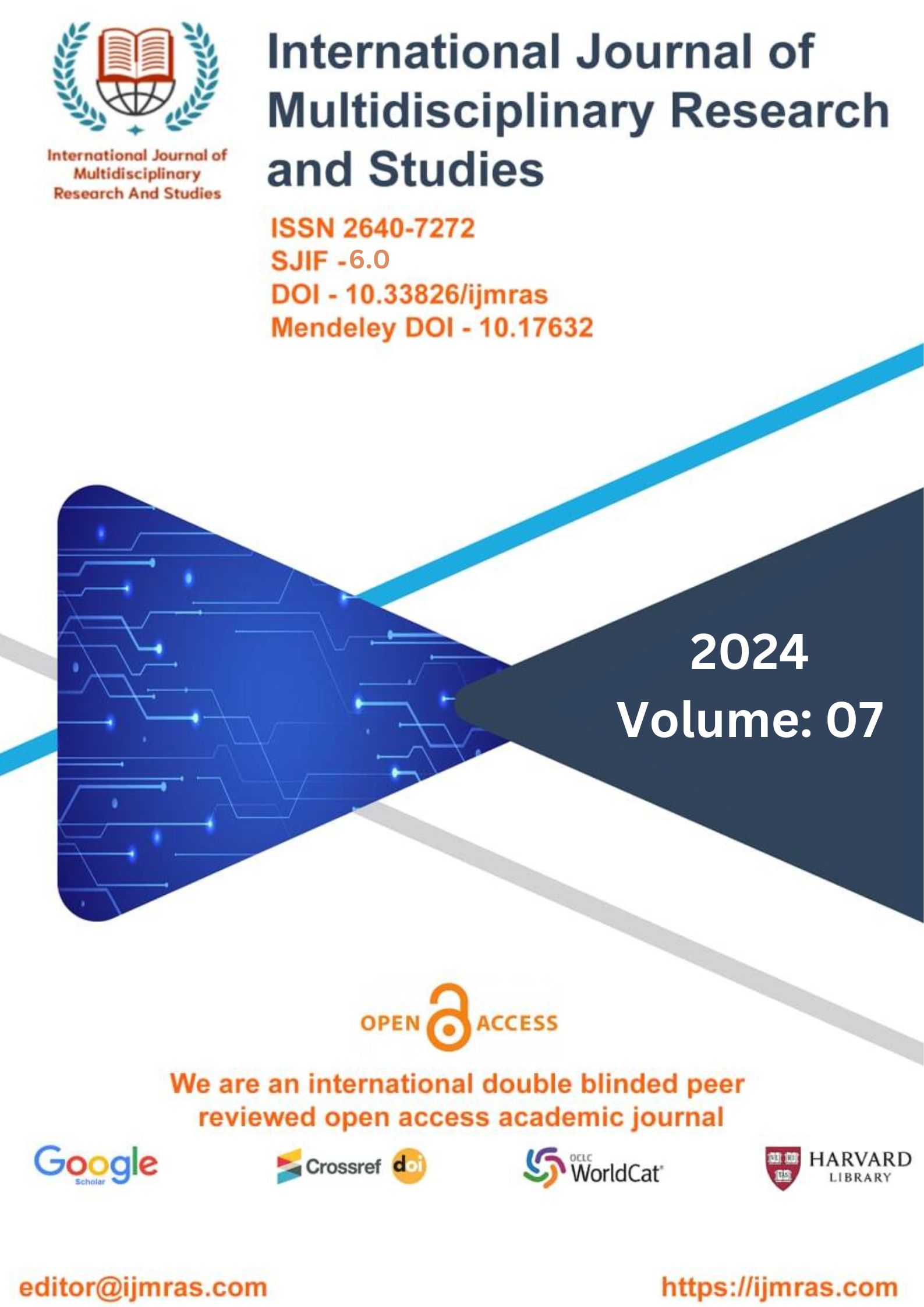Hydrodynamic modelling study to support china's water resources and advance water management

Abstract
Hydro economic "A quantitative and systemic framework for assessing the interplay between hydrologic, engineering, environmental, and economic activities in water resources systems is provided by analysis, which may aid in the training of IWRM professionals (Harou et al., 2009). Competition among water uses is reflected in terms of a common currency. This simplifies complex management problems into more manageable single-objective ones, letting us weigh the costs and benefits of different water-use strategies (Harou et al., 2009). Hydroe economic modeling has helped resolve issues with water management "across numerous spatial scales, from local to regional to national to international.
Keywords
Hydro Economic Model, Water ManagementHow to Cite
References
Ahmadi, A., Karamouz, M., Moridi, A., Han, D., 2012. Integrated Planning of Land Use and Water Allocation on a Watershed Scale Considering Social and Water Quality Is- sues. J. Water Resour. Plan. Manag. 138, 671–681.
Arbués, F., Garcı́a-Valiñas, M.Á., Martı́nez-Espiñeira, R., 2003. Estimation of residential water demand: a state-of-the-art review. J. Socio. Econ. 32, 81–102.
Ashfaq, M., Jabeen, S., Baig, I., 2005. Estimation of the economic value of irrigation wa- ter. J. Agric. Soil Sci. 1, 270–272.
Berkoff, J., 2003. China: The South-North Water Transfer Project — is it justified? Water Policy 5, 1–28.
Booker, J.F., Howitt, R.E., Michelsen, A.M., Young, R.A., 2012. Economics and the modelling of water resources and policies. Nat. Resource. Model. 25, 168–218.
Cardwell, H.A.L., Ellis, H., 1993. Stochastic Dynamic Programming Models for Water Quality Management. Water Resource. Res. 29, 803–813.
China Daily, 2004. Water Inflow to Keep Lake from Drying [WWW Document]. URL http://www.china.org.cn/english/travel/87509.htm
De Groot, R.S., Alkemade, R., Braat, L., Hein, L., Willemen, L., 2010. Challenges in inte- grating the concept of ecosystem services and values in landscape planning, manage- ment and decision making. Ecol. Complex. 7, 260–272.
Deng, X.-P., Shan, L., Zhang, H., Turner, N.C., 2006. Improving agricultural water use efficiency in arid and semiarid areas of China. Agric. Water Manag. 80, 23–40.
Erlendsson, L.B., 2014. Impacts of local drawdown on the optimal conjunctive use of groundwater and surface water resources in the Ziya River basin, China. Thesis, B.Sc. in engineering. Technical University of Denmark.
Gibbs, C., 1978. Price Variable in Residential Water Demand Models. Water Resour. Res.14, 15–18.
Heinz, I., Pulido-Velazquez, M., Lund, J.R., Andreu, J., 2007. Hydro-economic Modeling in River Basin Management: Implications and Applications for the European Water Framework Directive. Water Resour. Manag. 21, 1103–1125.
Karamouz, M., Moridi, A., Fayyazi, H.M., 2008. Dealing with Conflict over Water Quality and Quantity Allocation: A Case Study. Scietia Iran. 15, 34 – 49.
Kerachian, R., Karamouz, M., 2007. A stochastic conflict resolution model for water quali- ty management in reservoir–river systems. Adv. Water Resour. 30, 866–882.
Labadie, J., 2004. Optimal operation of multireservoir systems: state-of-the-art review. J. Water Resour. Plan. Manag. 130, 93–111.
Li, W., Li, X., Su, J., Zhao, H., 2014. Sources and mass fluxes of the main contaminants in a heavily polluted and modified river of the North China Plain. Environ. Sci. Pollut. Res. Int. 21, 5678–88.
Moiwo, J.P., Yang, Y., Li, H., Han, S., Hu, Y., 2010. Comparison of GRACE with in situ hydrological measurement data shows storage depletion in Hai River basin, Northern China. Water South Africa 35, 663–670.Qin, H., Cao, G., Kristensen, M., Refsgaard, J.C., Rasmussen, M.O., He, X., Liu, J., Shu, Y., Zheng, C., 2013. Integrated hydrological modeling of the North China Plain and implications for sustainable water management. Hydrol. Earth Syst. Sci. 17, 3759–3778.
Reeves, C.R., 1997. Feature Article—Genetic Algorithms for the Operations Researcher.INFORMS J. Comput. 9, 231–250.
Tilmant, A., Goor, Q., Pinte, D., 2009. Agricultural-to-hydropower water transfers: sharing water and benefits in hydropower-irrigation systems. Hydrol. Earth Syst. Sci. 13, 1091– 1101.
Zhang, L., Potter, N., Hickel, K., Zhang, Y., Shao, Q., 2008. Water balance modeling over variable time scales based on the Budyko framework–Model development and testing. J. Hydrol. 360, 117–131.
Zheng, C., Liu, J., Cao, G., Kendy, E., Wang, H., Jia, Y., 2010. Can China cope with its water crisis?--perspectives from the North China Plain. Groundwater 48, 350–354.
License
Copyright (c) 2024 LI NA, DR MOHAMMED SALEH NUSARI, DR HJ ARAZI BIN IDRUS

This work is licensed under a Creative Commons Attribution 4.0 International License.
Individual articles are published Open Access under the Creative Commons Licence: CC-BY 4.0.



